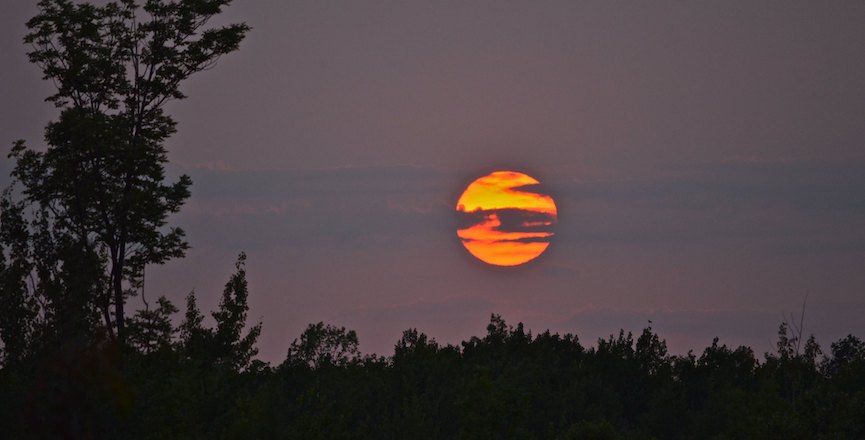Every year on February 2, Phil the groundhog comes out of his hole in Punxsutawney, Pennsylvania. If he sees his shadow, there will supposedly be six more weeks of winter. If he doesn’t see his shadow, spring will arrive early.
This tradition, which originally came from Germany, can help turn a dull news day into something more charming, not just in the U.S., but also in Canada. Here, Wiarton Willie is the name given to a Canadian groundhog who lives in the community of Wiarton in Bruce County, Ontario. Every February 2, Willie takes part in the local Wiarton Willie Festival.
In a pre-taped video for Groundhog Day in 2021, Wiarton Willie was nowhere to be seen. Perhaps he was abiding by the Ontario stay-at-home order in place at that time. Despite lack of evidence, the Wiarton Mayor predicted an early spring, perhaps to raise spirits during the coronavirus pandemic. Politicians including Prime Minister Justin Trudeau and Ontario Premier Doug Ford expressed hope for a live event for 2022, the 66th prediction next year.
What does this have to do with COVID-19? Spring arrives on March 1, a time during which most of Canada was under some form of pandemic lockdown. These ranged from stay-at-home orders to curfews to work-at-home and on-line learning. The situation regarding vaccinations was poor throughout Canada at that time.
But by June 20, the first official day of summer, many of the pandemic restrictions had been lifted. And the vaccine rollout was not just catching up, but edging towards leading the world in the percentage of the population that had received one or both shots.
Like the mythical Willie, people emerged from isolation. After 15 months, Canadians were excited to see the sun again. We were also able to enjoy outdoor activities in larger numbers, some permitted without masking. And as summer progresses, the restrictions are being further reduced, if not eliminated. And the sun is shining.
Unfortunately, this has reintroduced another health concern in Canada: melanoma, commonly known as skin cancer. Melanoma is the seventh most commonly diagnosed cancer in Canada and one of the most common cancer types found in young adults aged 15-29 and older ones aged 30-49. It is more prevalent in males than females.
Melanoma is a serious, but frequently overlooked health issue. One reason may be that the Canadian Cancer Society omits melanoma from its statistics, in order not to skew the incidence numbers. Still, in 2020, approximately 8,000 Canadians were diagnosed with melanoma skin cancer. This number is expected to increase to approximately 8,200 Canadians in 2021.
On average, 617 Canadians were diagnosed with some other form of cancer every day in 2020. In comparison, 22 Canadians were diagnosed with melanoma in the same time period.
Canada does not have an official plan to deal with melanoma, perhaps because in much of the country, sunshine is in short order for much of the year. This ignores that UV rays can cause melanoma, and UV rays persist even on cloudy or overcast days.
UVA and UVB rays can both cause skin damage and can ultimately cause melanoma. But the two kinds of rays do differ:
|
|
UVA Rays |
UVB Rays |
|
Can pass through window glass |
true |
|
|
Is 20 times more abundant than UVB rays |
true |
|
|
Is affected by change in altitude or weather |
|
true |
|
Is present 365 days a year |
true |
true |
|
Helps the body make Vitamin D |
|
true |
|
Contacts outer layer of skin |
true |
true |
|
Penetrates to inner layers |
true |
|
|
Causes tanning and sunburn |
|
true |
|
Can cause long-term skin damage |
true |
true |
|
Can cause pre-mature aging and cataracts |
|
true |
The good news is that the negative and damaging effects of both UVA and UVB rays can be reduced. Environment Canada publishes a UV index in local weather forecasts whenever the index is forecast to reach 3 or more that day. This level is considered the high end of the safe range.
Experts agree that understanding the risks of sun damage begins with knowing the forecast UV index and behaving accordingly. Several national skin care organizations, including those in Australia and the U.S., promote the five S’s of sun safety:
1. SLIP on a t-shirt
2. SLOP on SPF 30+ broad spectrum UVA sunscreen
3. SLAP on a broad brimmed hat
4. SLIDE on quality sunglasses
5. SHADE from the sun whenever possible
Each of the five preventive measures can help protect you. As is often the case, though, adopting all of them is much more effective than adopting one or two. For example, sunscreen cannot protect the skin on its own. It is a myth that sunscreen is a suit of armour and sunscreen should never be used to extend the amount of time spent in the sun.
Though it may sound like there is a big difference, SPF50+ offers only marginally better protection from UVB radiation, which causes sunburn and adds to skin cancer risk. SPF30 sunscreens filter about 96.7% of UV radiation, SPF50+ sunscreens filter 98% of UV.
Canadians may be seeing the light at the end of the tunnel in terms of the pandemic. But we are now experiencing sunshine that challenges our health in different ways. As with COVID-19, it’s best to take precautions, especially when they are readily and easily available.
Evelyn H. Lazare is a retired health-care planner, strategist and executive. Currently living in Ottawa, she now devotes her writing primarily to novels.
Image: pontla/Flickr




